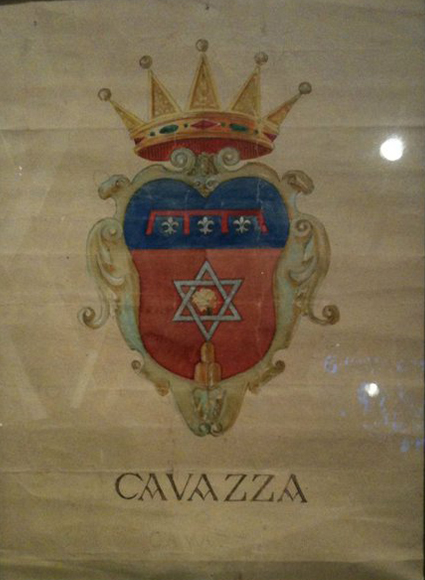Steve Cavazzi loves history. And history loves Steve Cavazzi, a brawny, inked and smiling Danbury, Connecticut, resident who traces his ancestry back 1,200 years. His face wears more of a beam than a smile, one that could easily light up a room.
“I’ve been told,” Steve says, “that after the fall of the Roman Empire, members of my family took over parts of (what would become) Italy as landlords,” and you’d better believe him, because he has the papers to prove it. “All of our family history was very well-documented, and those documents were handed down to the first-born son in every generation.”
One especially notable ancestor was Dante Alighieri, the 13th-century Florentine writer, poet and philosopher, author of “The Divine Comedy.” Another was Antonio Cavazzi da Montecuccolo, an 18th century Capuchin friar and missionary to Africa, whom a pope commissioned to write a history of the Congo. “We actually have the original manuscript,” Cavazzi mentions casually.
I mention casually that I hope it’s stored in a safe place, along with all the other age-old family treasures.
“Oh yeah,” says, Cavazzi, with a roll of his eyes. “Though, in fact my mom did something so reckless with it. She hot glued, it to a display case she had bought to hang on the wall. I was like, mom, you can’t do that.”
At this point you might think the genial and historically-minded Cavazzi was pulling your leg, or that he had completely lost his marbles. Far from it — although marble certainly comes into the story.
His great-grandfather, a doctor and a veterinarian, came over from Italy, early in the last century and, in 1934, his son, Arthur — Steve Cavazzi’s grandfather — started working for G M Crocetti Inc., the tile, terrazzo and stone contracting company located in the Bronx. When Crocetti’s founder died a decade later, Arthur Cavazzi was able to buy a 25% share of the business and grew it to become the biggest marble company in the Northeast.
The revitalized Crocetti company “did everything,” from the massive Co-op City development in the Bronx to the Pan American Building now the MetLife Building in Manhattan) to the Baltimore Harbor Tunnel. When, in turn, Steve Cavazzi’s father took over the business, he continued the legacy. But in 2007, G M Crocetti closed its doors. “For multiple reasons — the perfect storm of reasons,” says Cavazzi, smiling, though perhaps a little wistfully.
With the family business no longer behind him and after a spell as an electrician, Cavazzi decided to make his career in the world of stone. In 2012, he was admitted into the BAC Local 7 — the tile, marble, terrazzo and bricklayers’ union.
His four-year apprenticeship, however, was no walk in the park. Leaving home each morning at 4:30, he would walk the four miles to the Brewster train station, to catch the train into Grand Central Terminal. He was making $100 a day — from which the train fare and his lunch had to be deducted — but eventually the pay improved and work came in. As for marble, it is, so to speak, ingrained in him. “Every guy in the union, when they hear my last name, they known exactly who I am,” he muses.
The work is skilled, physically demanding, sometimes thrilling and often dangerous. A typical day at the World Trade Center, where he worked for three and a half years, would start with setting up the stones in chronological order, using a pulley system attached to the ceiling of the 90-foot-high lobby to hoist them up. “You pull 3 feet and the stone moves maybe an inch,” says Cavazzi, giving a sense not only of the physical demands of the job, but also the scale of the project. How did they build the Pyramids,” I ask him? “Or the Empire State Building, for that matter,” he retorts — “in just 18 months.” He also describes laying the floor in the lobby, beating the stone down into its bed of compacted sand — half a million square feet of glorious, flawless marble.
Although he doesn’t chisel marble, Cavazzi is used to laying some extremely elaborate designs and doing so in some extraordinary places. He has worked, as he says, for some of the wealthiest people in the world. He “did” Larry Silverstein’s place (that would be 30 Park Place, one of Manhattan’s tallest residential towers, where the World Trade Center developer owns a home,) as well as Ira Rennert’s 64,000-square-foot mansion in the Hamptons, believed to be the largest private home in America. “We did 30 million dollars of stonework there,” Cavazzi says breezily. “The plumber used to ride around on a bicycle just to get from one side of the basement to the other.”
Diamonds may be forever but marble clearly isn’t going out of fashion any time soon either. Nor does the best stuff come cheap. Italy, specifically Carrara, is still the home of the world’s finest white marble, Cavazzi says.
Ask him about his favorite gigs and he comes back to the World Trade Center. “It had a real purpose. And there was so much hustle and bustle, with documentary film crews and ironworkers a quarter of a mile in the sky, walking across beams.” It brings to mind the iconic Charles C. Ebbets photograph “Lunch Atop a Skyscraper (New York Construction Workers Lunching on a Crossbeam),” a dizzying view from the then-under-construction 30 Rockefeller Plaza that appeared in the Sunday photo supplement of the New York Herald Tribune in October, 1932. Cavazzi points out that the workers can’t always be harnessed in either, since they have to be extremely versatile and the work is often even more dangerous than it appears, “you know, with all that steel swinging around them out there,” he adds.
Inevitably, as skyscrapers progress, the views become increasingly exciting. “Just being up there, seeing New York City from 1,400 feet in the air, man,” Cavazzi says, seeming to get another adrenalin rush just recalling it. “You get on that hoist (the elevator going up the side of the building) and yeah, it can be a little frightening, feeling the wind whipping round you.” I need no convincing.
Clearly, though, he loves his trade. He points out that he can handle all kinds of stone. “If you can work with marble, which is the hardest stone, you can work with anything.”
Or for anyone. Although private contractual work was traditionally shunned, unusually for unions, Local 7 members are allowed to solicit their own work, especially in these difficult times. “You call the union and they set you up. Either that, or you know people,” Cavazzi says with a twinkle. If you can do it in stone, Cavazzi will do it — and you don’t have to have a 64,000-square-foot mansion to get his attention.
Reach Steve Cavazzi at
scavazzi1986@yahoo.com.




